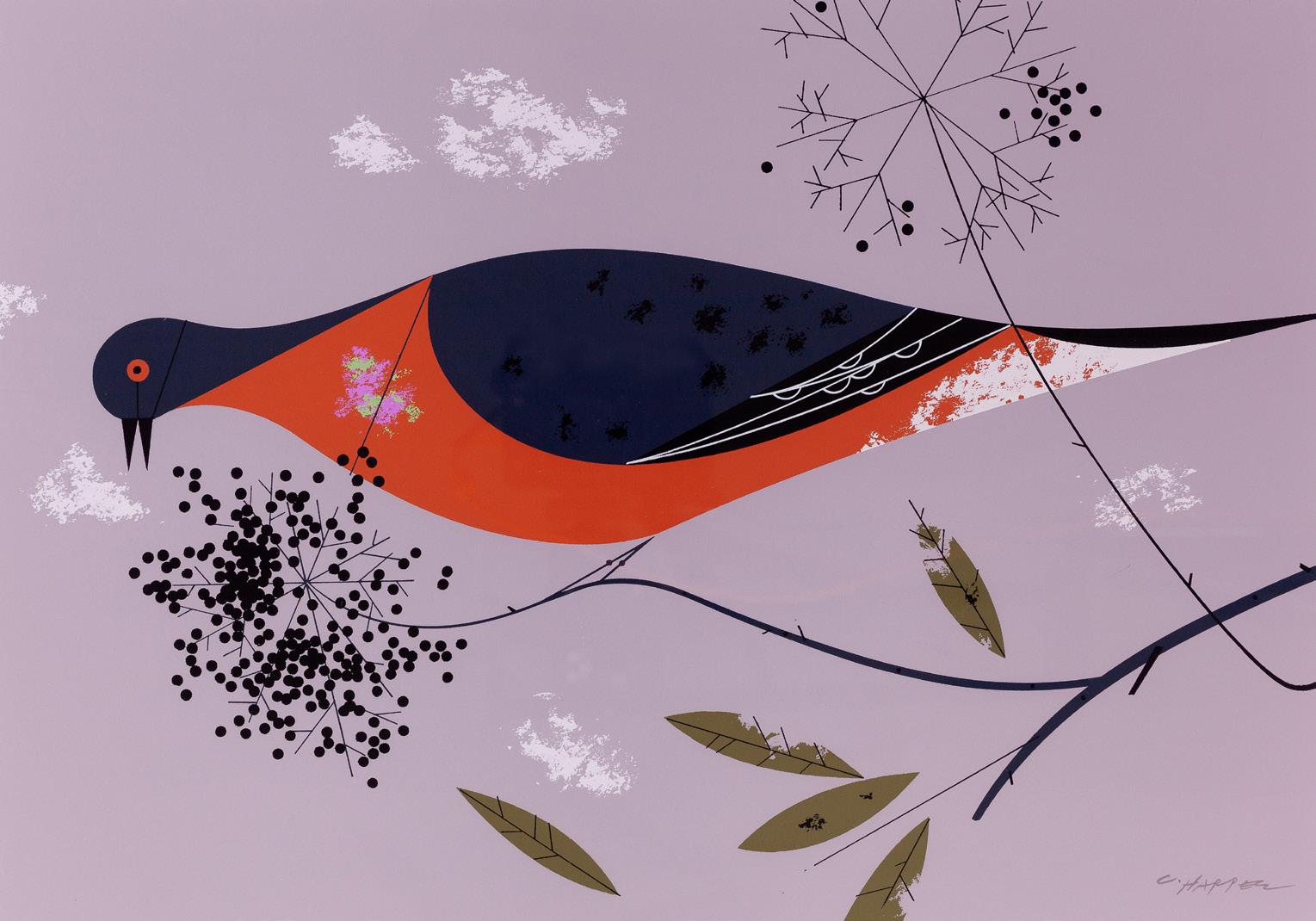
2 minute read
DON’T LET SUMMER FLY BY
It would be a shame to miss our summer exhibits. The art of nature—on paper and on the wing—is currently on view in abundance at the Museum. The Sprague Butterfly Pavilion looks more beautiful than ever, with a jungle of foliage providing roosting and nectaring space for about 1,000 butterflies. The variety of species coming from our butterfly farmer in Costa Rica is astonishing. Their diversity is on display both in the pavilion and in Santa Barbara Gallery, where guests can watch the adult butterflies emerge from their chrysalides.
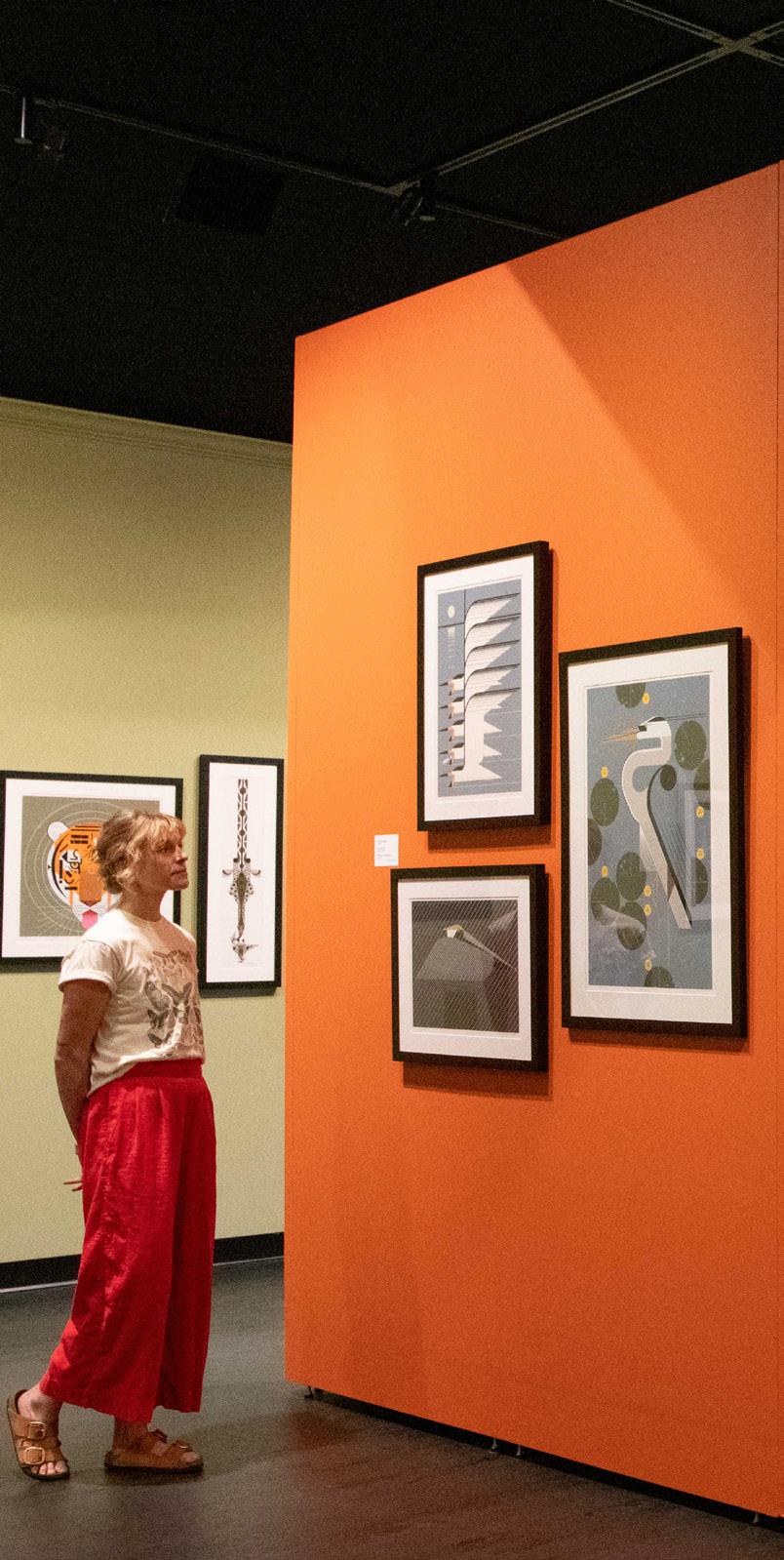
Advertisement
For the families who flock to butterflies this summer, there’s an extra treat in the Courtyard Gallery just off the Museum’s entrance. Curious by Nature: Works of Charley and Edie Harper (organized by Springfield Museum of Art and Fowler Artistic LLC) boasts a parade of striking wildlife in the form of a whopping 86 serigraphs. The Harpers favored this medium (also known as screen printing) to reproduce their bright, geometric paintings, since it’s ideal for bold, flat images, like Andy Warhol’s Marilyn Monroes.
Bold and flat these images may be, but the Harpers’ work is only deceptively simple. Look closer and you’ll appreciate details of predators and prey, cunning adaptations, and surprising moments of drama even in the most everyday subjects. It’s approachable art that people want to take home and live with.
Born on a farm in West Virginia in 1922, Charley Harper was enthralled by the surrounding wildlife, but bored by the art training he received in his home state. Packed off to the respected Art Academy of Cincinnati, he put down roots in Ohio. He got his start doing commercial art for big brands in the 1950s, but hit a turning point in 1960 when commissioned to illustrate The Giant Golden Book of Biology. After that, he focused his playful modernist sensibility on wildlife and nature, and never looked back, working right up until his death in 2007.
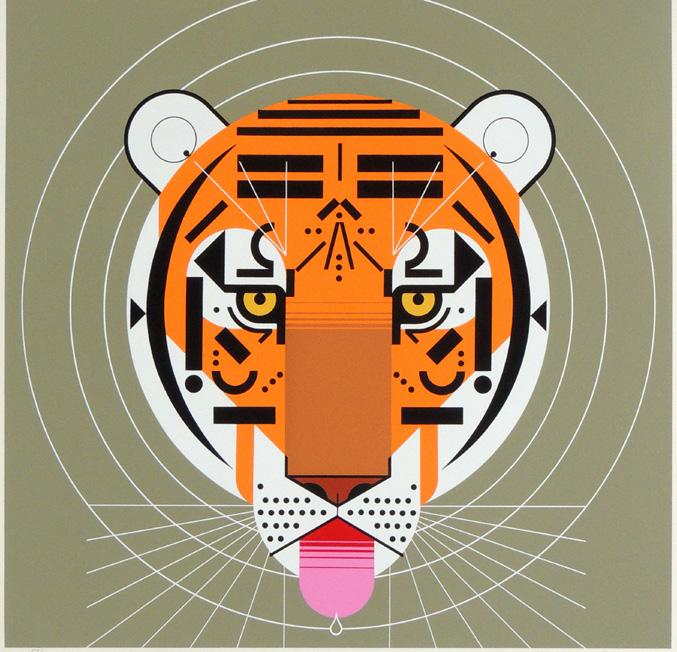
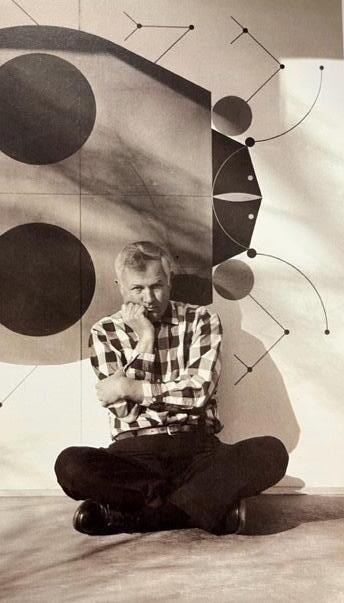
In his later years, he tackled urban sprawl and other threats to the environment, and his final completed piece was a comment on climate change. The current exhibit showcases pieces spanning the late 1960s to the early 1980s, the heart of his career.
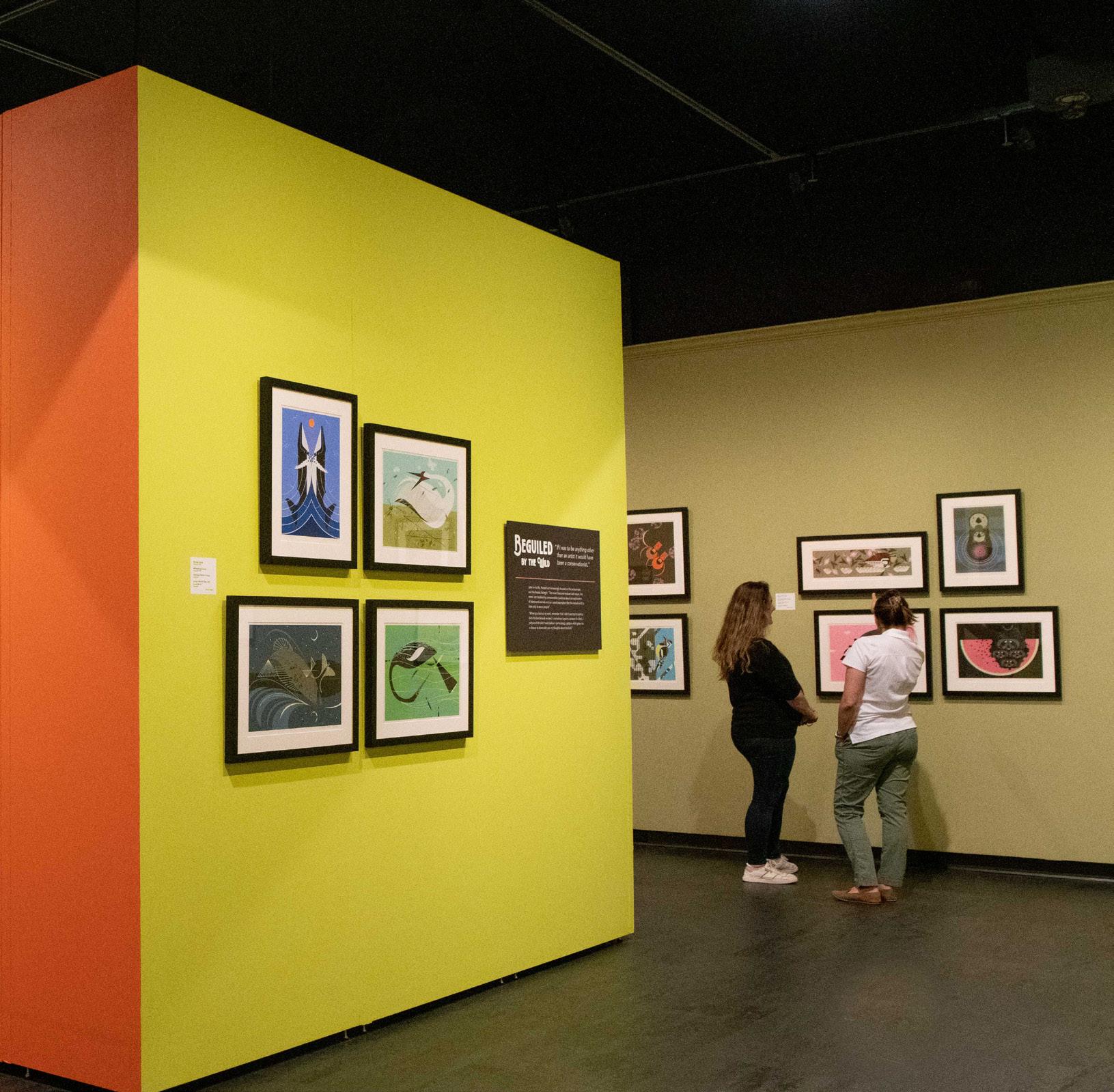
Harper’s method was to distill an animal’s form into its most basic essence of color and shape. He called it “minimal realism,” and said the term was “an irreverent spoof of the apparent need of critics and art historians to categorize art.” His sense of humor is also evident in the compulsive wordplay of his titles.
Edie Harper’s less-known work is represented in 19 prints. She and her husband were partners in life and art. ”Our minds work in parallel,” said Charley. Guests of Curious by Nature can consider Edie’s complementary work—and create their own geometric interpretations of animal life— in an area dedicated for kids to create their own art and read.
Curious by Nature (through Sep. 10) and Butterflies Alive! (through Sep. 4) are included with Museum admission; Members are always free.









